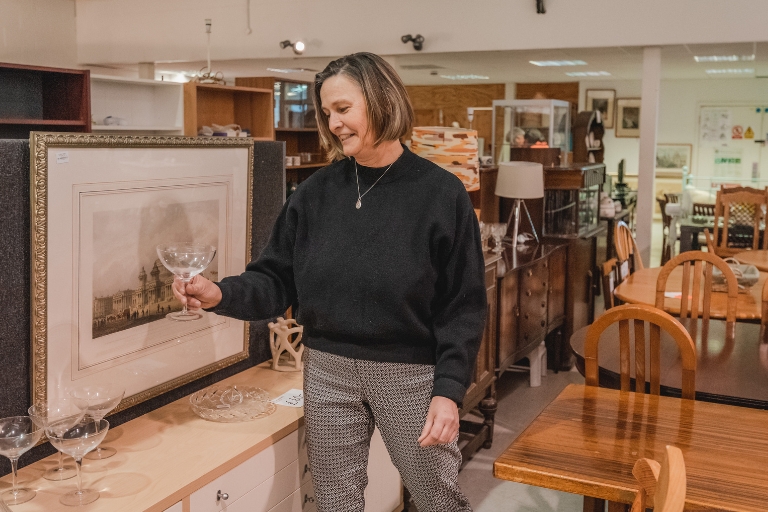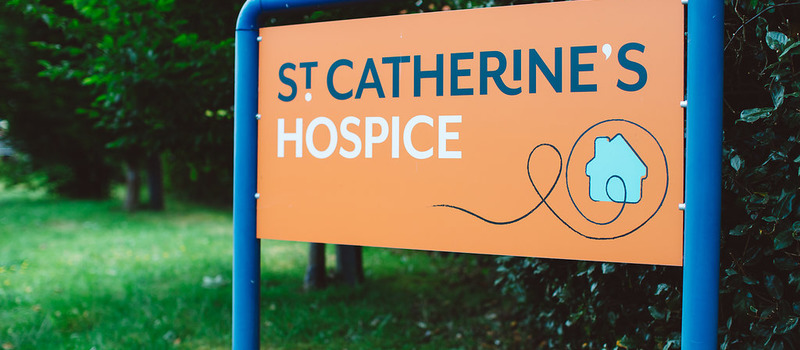Inclusion, equality, equity and diversity at our hospice
At St Catherine’s Hospice we’re committed to supporting everyone to face death informed, supported and pain free so we’ve been focusing on inclusion, equity and diversity at the hospice.
Our Digital Marketing Executive and Equality, Diversity and Inclusion Group (EDI) group member Francis shares about his experience volunteering at St Catherine’s first Crawley Pride event and the importance of diversity and inclusion at our hospice.
“As someone who ticks a fair few boxes on diversity forms, I was keen to be part of St Catherine’s EDI group when I first joined the hospice.
Nearly two and a half years on, I’m leaving St Catherine’s for pastures new, but it’s an exciting time at St Catherine’s as our EDI group builds momentum.
Already we’ve been developing our recruitment processes by making them more inclusive and we’ve discussed ways to make our website, patient information and communications more accessible.
We’ve also created a workplan for improvements to inclusion across other areas of the hospice. From looking to make sure our workforce better reflects the communities we serve, to embracing radical approaches for providing care to diverse groups.
Volunteering for St Catherine’s at Crawley Pride
Last weekend I spent a few hours volunteering on our St Catherine’s stall at Crawley Pride.
I was proud to be there as a member of the LGBTQ+ community and proud to represent St Catherine’s. People were seriously overjoyed to see us there, and keen to share their thanks for the support our hospice provides to the local community.
Having a stand at Pride was a small step towards growing awareness around St Catherine’s wish to stand alongside everyone in our local community. Hopefully, next year we might also be part of the march through the town.
Visibility and active engagement with Crawley’s various diverse communities should be a positive signal to staff, potential future job candidates, volunteers, families and fundraisers. A signal that our hospice is aiming to be more inclusive, and that we’d like to make people feel more welcome, represented, comfortable and supported across the board.
When I was on the stand on Saturday, SO many people said how much they were pleased to see St Catherine’s there at Pride
Not only were we able to share our job, volunteering and fundraising opportunities with people, but people came over to share memories of their loved ones with us.
The vast majority of people I spoke to on the stall had personal connections to St Catherine’s, with incredible stories and gratitude about the level of care their friends and families had experienced with us.
As we were aiming to signal inclusivity, I took my own “Progress Pride” flag along to fly on the stall
This redesigned version of the rainbow flag (with extra colours) further represents marginalised LGBTQ+ communities; with black, brown, blue, pink and white stripes to represent people of colour, the trans community and people living with HIV/AIDS. The Yellow triangle with purple circle represents the intersex community. It seemed to be an immediate draw to several young people who came over to the stall.
One 10-year-old girl excitedly skipped over with her mother and exclaimed proudly to us, “I’m trans!” which was very inspiring to see. I wish I had that level of confidence now, let alone at 10!
Thanking our staff
People sang the praises of our teams working across the hospice, from our amazing clinical staff – especially our community and ward nurses – to our volunteers, cleaners, maintenance, wellbeing and catering teams. Of course, the “jolly drinks trolley” got a few mentions too!
Some of our visitors told us they’d loved spending time in the hospice gardens and how relieved they’d been to be under our care
They relayed that this was not just for the care received by their loved ones, but for the wider care, support and bereavement counselling they’d received themselves. Several had taken part in our various fundraising events and continued to raise money for us.
Despite experiencing the pain of the loss of someone close to them, who had either died at the hospice, or been supported by our teams at home, it was clear that St Catherine’s held a special place in many people’s hearts.
It was a real privilege to hear people’s experiences. Not only was I proud to be at Pride, it made me feel proud to have been a small part of the work that St Catherine’s delivers to the community.
There is still much work to do…
Marie Curie’s 2017 report “Hiding who I am” – The reality of end of life care for LGBT people notes that:
“many older LGBT people have significant fears about palliative and end of life care services. They are concerned that service providers and health and social care professionals will be indifferent to their sexuality and gender identity, or, at worst, actively hostile. They worry that palliative and end of life care services are simply ‘not for them’, or that they will receive worse treatment than their straight peers. These fears are not unwarranted.”
Unfortunately, I very much relate to this fear.
As someone who has felt “Othered” and worse just for being my authentic self, I know personally how this can lead to a feeling of marginalisation at work, or feeling vulnerable, especially in healthcare settings.
‘Coming out’ even to health and social care professionals can feel daunting at the best of times and accessing supportive end of life care without fear of indifference, insensitivity or discrimination is something I’m sure we’d all like for everyone under our care.
But treating “everyone the same” is not the answer
Embracing people’s differences – ethnicity, gender identity, neuro-divergence/impairment or disability, sexual orientation, religion, age and so on, can be a strength and a real advantage to organisations. Saying things like you don’t see colour, don’t care who someone sleeps with or what religion they are may feel open-minded and supportive, but this can often negate people’s lived-experiences of being othered.
Everyone is not the same and will have a unique experience of sometimes intersecting and overlapping identities that could marginalise them.
Some may have invisible differences, disabilities, neurodivergences or may not want to openly shout these from the rooftops and risk potential stigmatisation. Building inclusive practices, learning about and valuing difference, and having an awareness and sensitivity around the assumptions we might make will help us all professionally and personally.
It is sometimes a bit scary, and sometimes we might get it wrong, but we can all continue to learn. With all our different experiences at St Catherine’s, it’s exciting to think we can work together to make sure that the diversity of our local community is better reflected in our workforce and on our wards.”














